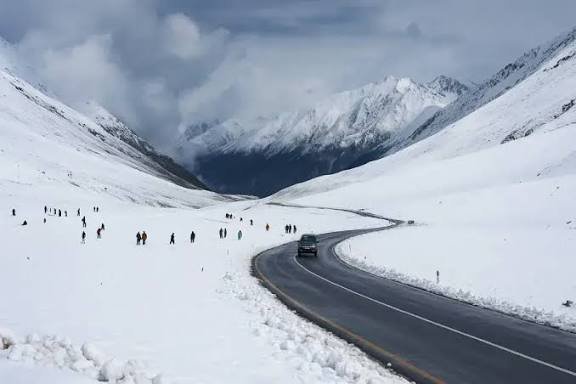A Devastating Crisis Grips Punjab
Pakistan’s Punjab province is reeling from a massive Punjab Flood Crisis that’s left villages submerged, homes destroyed, and thousands displaced. On August 28, 2025, Prime Minister Shehbaz Sharif and Punjab Chief Minister Maryam Nawaz made a beeline for the flood-hit areas, conducting an aerial survey to assess the devastationv. The Punjab Flood Crisis, driven by record-breaking monsoon rains and surging rivers like Chenab, Ravi, and Sutlej, has prompted urgent rescue and relief efforts. From Lahore to Narowal, the leaders are stepping up to tackle this disaster head-on.
The Punjab Flood Crisis has turned lives upside down, with social media buzzing with stories of loss and calls for help. As authorities scramble to evacuate residents and deliver aid, the nation watches closely. Here’s the full story on the Punjab Flood Crisis, its impact, and what’s next for Punjab’s struggling communities.
What Triggered the Punjab Flood Crisis?
The Punjab Flood Crisis exploded into action due to relentless monsoon rains battering Punjab since mid-August 2025. Rivers Chenab, Ravi, and Sutlej are flowing at “very high to extremely high” levels, with the Ravi at Shahdara hitting a massive 180,000 cusecs. Water releases from India into the Sutlej, combined with local rainfall, have worsened the flooding, submerging areas like Narowal, Sialkot, and Gujrat. The Punjab Flood Crisis intensified as the National Disaster Management Authority (NDMA) reported high-level flooding at key points like Head Marala and Khanki on the Chenab.
READ NEXT: Bill Gates $1M Lifeline Boosts Pakistan Flood Relief
During their August 28 visit, PM Shehbaz and CM Maryam were briefed by NDMA Chairman Lt Gen Inam Haider Malik on the dire situation, including rising river levels and ongoing rescue operations. The Punjab Flood Crisis has also been linked to climate change and illegal encroachments, with PM Shehbaz calling for stronger flood defenses and dam construction. The leaders’ visit underscores the urgency of addressing this escalating disaster.
Why This Matters
The Punjab Flood Crisis is more than just rising waters it’s a humanitarian emergency. The floods have damaged crops, homes, and infrastructure across Punjab, with 2,500 homes evacuated in Shahdara and Narowal alone. The NDMA has delivered 5,000 tents and is rushing food, medicines, and other supplies to affected areas. PM Shehbaz’s orders for federal ministers to oversee relief in their constituencies highlight the scale of the Punjab Flood Crisis, per brecorder.com.
The crisis has also disrupted daily life, with urban flooding risks looming in cities like Lahore, Sialkot, and Gujrat. CM Maryam’s hands-on approach, including inspecting safety embankments at Shahdara’s Ravi Bridge, shows the government’s commitment to saving lives. The Punjab Flood Crisis has sparked a massive response, with Rescue 1122, Rangers, and the Army mobilized for evacuations and relief. It’s a race against time to protect Punjab’s people and property.
Public Reaction and Social Media Frenzy
The Punjab Flood Crisis has set social media ablaze. On August 28, 2025, X posts from Punjab showed a mix of gratitude and frustration. “PM Shehbaz and CM Maryam are finally here, but we need more aid!” one user wrote, while another shared, “The Punjab Flood Crisis is heartbreaking our homes are underwater,” per posts on X. Clips of the leaders’ aerial survey went viral, with many praising their visibility, though some criticized delays in ground-level relief, per pakobserver.net.
President Asif Ali Zardari’s X post on August 27, expressing grief and urging Sindh to prepare for incoming floodwaters, amplified concerns about the Punjab Flood Crisis spreading downstream. Meanwhile, PML-N chief Nawaz Sharif’s call for ministers to join relief efforts in their constituencies resonated with supporters, per dunyanews.tv. The online buzz reflects the urgency and emotional toll of the Punjab Flood Crisis on Punjab’s communities.
Challenges in the Flood Zone
The Punjab Flood Crisis brings massive challenges. Floodwaters have entered residential areas like Thaim Park and Chohng in Lahore, forcing urgent evacuations. The NDMA warned of “exceptionally high” flooding at key points like Ganda Singh Wala on the Sutlej making rescue operations tricky. In Sialkot, record rainfall of 355mm in 24 hours—the highest in 11 years has overwhelmed infrastructure, per nation.com.pk. The Punjab Flood Crisis is stretching resources, with 2,000 trucks on standby for evacuations.
Coordinating relief is another hurdle. PM Shehbaz emphasized stronger inter-agency coordination to avoid losses, but damaged roads and power outages complicate efforts. CM Maryam’s directive to expedite evacuations of residents and livestock from riverbanks shows the pressure to act fast. The Punjab Flood Crisis demands round-the-clock work to keep communities safe amid unpredictable weather.
A Glimmer of Hope Amid the Deluge
Despite the Punjab Flood Crisis, relief efforts are gaining ground. PM Shehbaz ordered immediate measures to prevent urban flooding in Lahore, Sialkot, and Gujrat, while ensuring timely warnings for Sindh to brace for floodwaters. CM Maryam’s high-level meeting during her return from Japan ensured all provincial institutions were mobilized, per nation.com.pk. The NDMA’s early warnings have saved lives, with no fatalities reported in Punjab despite the chaos.
Rescue operations are in full swing, with the Army, Rangers, and Rescue 1122 working tirelessly, per tribune.com.pk. A controlled explosion at the Qadirabad dam eased pressure on the Chenab River, showing innovative responses to the Punjab Flood Crisis. These efforts, backed by federal and provincial coordination, offer hope that Punjab can weather this storm.
What’s Next for Punjab?
The Punjab Flood Crisis shows no signs of easing, with the Pakistan Meteorological Department (PMD) predicting more rain in northeastern Punjab on August 29,. PM Shehbaz and CM Maryam are set to receive a detailed briefing in Narowal to plan further relief. The leaders have called for stronger water storage solutions, like the Bhasha and Mohmand dams, to prevent future crises.
Residents are urged to follow NDMA alerts and avoid rivers and low-lying areas, per brecorder.com. Relief camps are providing food, tents, and medical aid, with ministers on the ground to monitor efforts. As Punjab battles this Punjab Flood Crisis, the resilience of its people and leaders shines through. Stay tuned for updates on this unfolding disaster.



